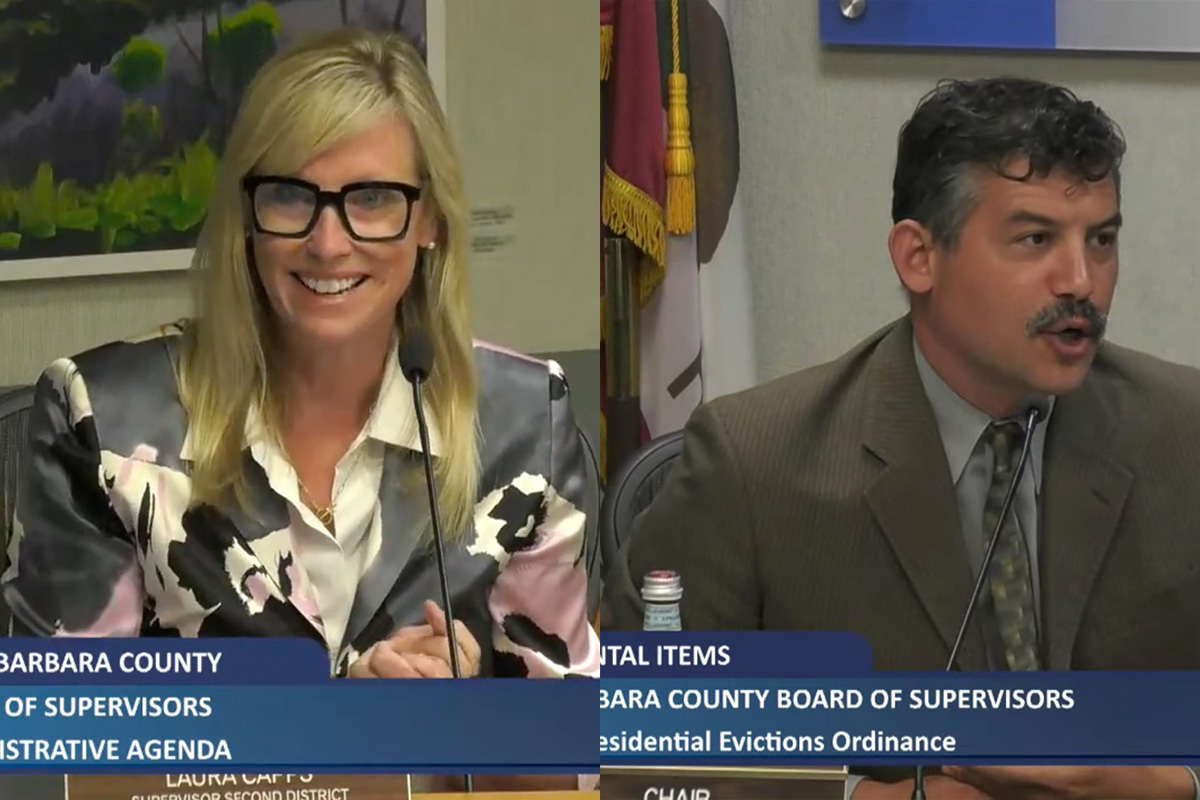Supes Add Right-of-Return to Renoviction Law
Santa Barbara County Chews Over Mandatory Lease Offer

Renoviction law was back before the Santa Barbara County Board of Supervisors on Tuesday, as the five supervisors considered adding language requiring a landlord, if taking a rental unit off the market, to allow the tenant to return in a no-fault eviction. As well, all landlords in the county would be required to offer their tenants a one-year, or longer, lease within 60 days after passage of the ordinance. The proposal passed 3-2, but not until testimony was heard of the necessity of the new rule and its unintended consequences.
The ordinance, proposed by supervisors Laura Capps and Das Williams, will come back for further recommendations on July 11, but the major change was a right for a tenant to return to a renovated unit. On April 6, the county passed an ordinance requiring a landlord to provide tenants with copies of permits before an eviction based on “substantial renovation” could proceed.
A wave of renovictions large and small has occurred in the county, staff reported. The term “NOAH” is used to describe “naturally occurring affordable housing,” or multi-family units in a location or condition that decreases the amount of rent that can be charged, making them affordable. The county lost 754 such units during the past three years, according to the California Housing Partnership, and looks to lose another 2,050 in the next two years. The League of Women Voters wrote that the county has only 7,000 units affordable to households in the 80 percent range of area median income.
Regarding the one-year lease requirement, the new amendment only mandates it be offered; a tenant need not accept it if they prefer a month-to-month rental. To that end, the county’s Community Services Department was directed to come up with a document tenants could use to refuse the lease offer.
But the one-year-lease offer triggered doubts among landlords, one public speaker said. As a rental property manager in Santa Maria, he knew how complex government, owner, and tenant relations could be. He warned that a lease would not help owner-tenant relations and offered to serve on a volunteer group to figure out a better way.
Supervisors Steve Lavagnino of Santa Maria and Bob Nelson of Orcutt had similar reservations that there had to be a better way. Lavagnino said he could vote for the ordinance amendment if it only applied to South County. Nelson observed that the problem was that the county was making it less and less attractive for anyone to build, much less build affordable homes. He argued that making home ownership more possible and streamlining the building process would be more effective in keeping people in homes.
One CBC tenant described what a “no fault” eviction meant. She paid her rent on time and she was a good neighbor, she told the supervisors, and the Housing Authority had inspected her apartment and found it to be “in fine condition and in need of no habitability repairs.” Speaking of this brought her to tears. She said she had been homeless for four-and-a-half years and was only now beginning to “open up” to others about her situation. She’d been looking for a one-bedroom apartment that had equal space and rent, but wasn’t finding anything close to her doctor and physical therapist. “Give people here a rent cap,” she asked, “so that if they want to return, they’ll be able to afford it, and it won’t be double what they pay now.”
She was joined in that request by a number of tenant groups.
There was hope of a statewide rent cap of 5 percent, which had been part of State Senator Maria Durazo’s Senate Bill 567, known as the Homeless Prevention Act. However, Durazo (D–Los Angeles) agreed to keep the cap at the current state amount of 10 percent after landlord organizations opposed the lower threshold in May. The bill has succeeded in making its way to the Assembly.
